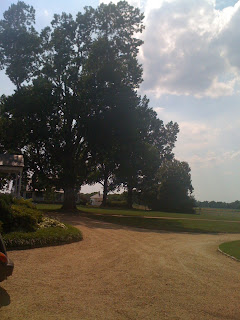The purpose of this entry is to help you navigate through FrantzFanon’s chapter on National Consciousness and help you get ready for classroom discussion.
Fanon wrote this book in the three-year period in which he helped lead the psychiatric hospital in colonial Algiers, and as he wrote articles for revolutionary papers, and collaborated with the Algerian resistance. He did not have the assistance of an editor, the service of a computer or the disposal of a vast library (or the Internet for that matter). He engendered this work while he slept about four hours a day, hardly ate, and was under constant surveillance.
This is a work of painstaking pondering that comes from the meeting of considerable intellectual sweat, and hardcore, real-life political experience. At its heart, this chapter is a poignant demonstration of profound compassion for the unprivileged.
As an intellectual that trusted the people, Fanon main interest was to share with the Africans, who were on the brink of catapulting from colonialism, what he already knew about being a postcolonial, and what he thought will happen in the near future; all through the eyes of history. In fact, the Latin American past hanged predominately in Fanon’s head. Most Spanish America had over a century of postcolonial experience already, and Fanon wanted all Africans to avoid the pitfalls rendered clear through Western Hemisphere’s history.
Fanon objective was clear. He wanted to help deliver the promises of nationalism and avoid the “crude and fragile travesty of what might have been”. He had come to the conclusion that the hope of the postcolonial nation was not foreign investment or better relations with wealthy countries, but the mobilizing of its “revolutionary capital, which is the people”. In other words, the national leaders will achieve true independence only by trusting their own people.
But the main obstacle to the promise of nationalism was in fact the national bourgeoisie. These were the wealthy nationals who wanted to run the country after the exit of the colonial government. The problem was that they could not “rationalize” popular action.
The bourgeoisie has been crippled by colonialism; they had no economic power, no imagination and no political will. They were merely invested in small businesses, agriculture, and the liberal professions. They had neither financiers nor industrial magnates. They were “not engaged in production, nor in invention, nor building, nor labor.” Unfortunately, this caste had become the intermediary for the economic forces of the richest countries, and had neglected their role as national enablers. Thus, they could not deliver real independence, which in turn explains why postcolonial nations remained hanging as colonial drapes.
Read this chapter with these questions in mind:
What was Fanon's problem with producing only raw materials, nationalizing industries, promoting tourism, competition with other poor countries (as opposed to cooperation), chauvinism and tribalism?
Pay close attention at Fanon’s relentless assault on the national bourgeoisie. What was his problem with this “little greedy caste”? On the other hand, what is the responsibility of a strong bourgeoisie?
How do religious revivals may fuel racial rivalries?
What is the meaning of this phrase: “a racism of contempt: it minimizes everything it hates”?
How could African unity be achieved? What are the problems with a single party? What are the (harmful) pillars of regimes in underdeveloped countries?
Explain Fanon’s ideal: intellectuals collaborating with the masses against the national bourgeoisie.
What is the role of political party?
How Brasilia might have been a good example?
Note the industrialization and development against nature.
What was Fanon’s mood towards the plight of the African women?
What was his take regarding obscure language? And what does the unyielding black market said to him?
For Fanon, what produces the wealth of the rich? And what is the role of the education of the masses?
What are the pitfalls of youth’s pastimes, sports and national consciousness, and the quest for heroes?
What can the army bring to the construction of the nation, and what are the dangers of having the army involved in politics?
What do you find useful and revelatory in Fanon’s long essay?
Fanon ended the chapter with something that we may find controversial. He thought that a nation that is just coming out of colonialism should cultivate a sense of strong nationalism before developing social consciousness. In other words, people should feel united and develop a feel for national responsibility before demanding social justice. What do you think of this?









